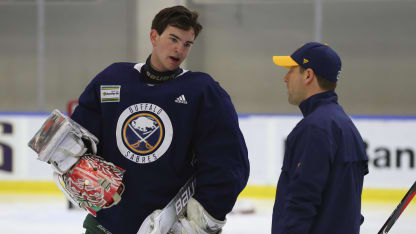"I think I was very lucky. First off, I had Kalle Larsson, the general manager in Dubuque. He was the one who brought me in and he's also from Gothenburg, so he was great with me. He really helped me out. And then Oliver David, the coach, and the coaching staff did a terrific job to help me adjust and give me all the tools I needed. And then finally, which I feel is the biggest reason, is my billets. I lived with another player, Riese Gaber. They really helped me out every day. I could talk with them, they made great food for me, and I had a great room to live in. So, they made that transition so easy for me and I'm very thankful for what they did."

